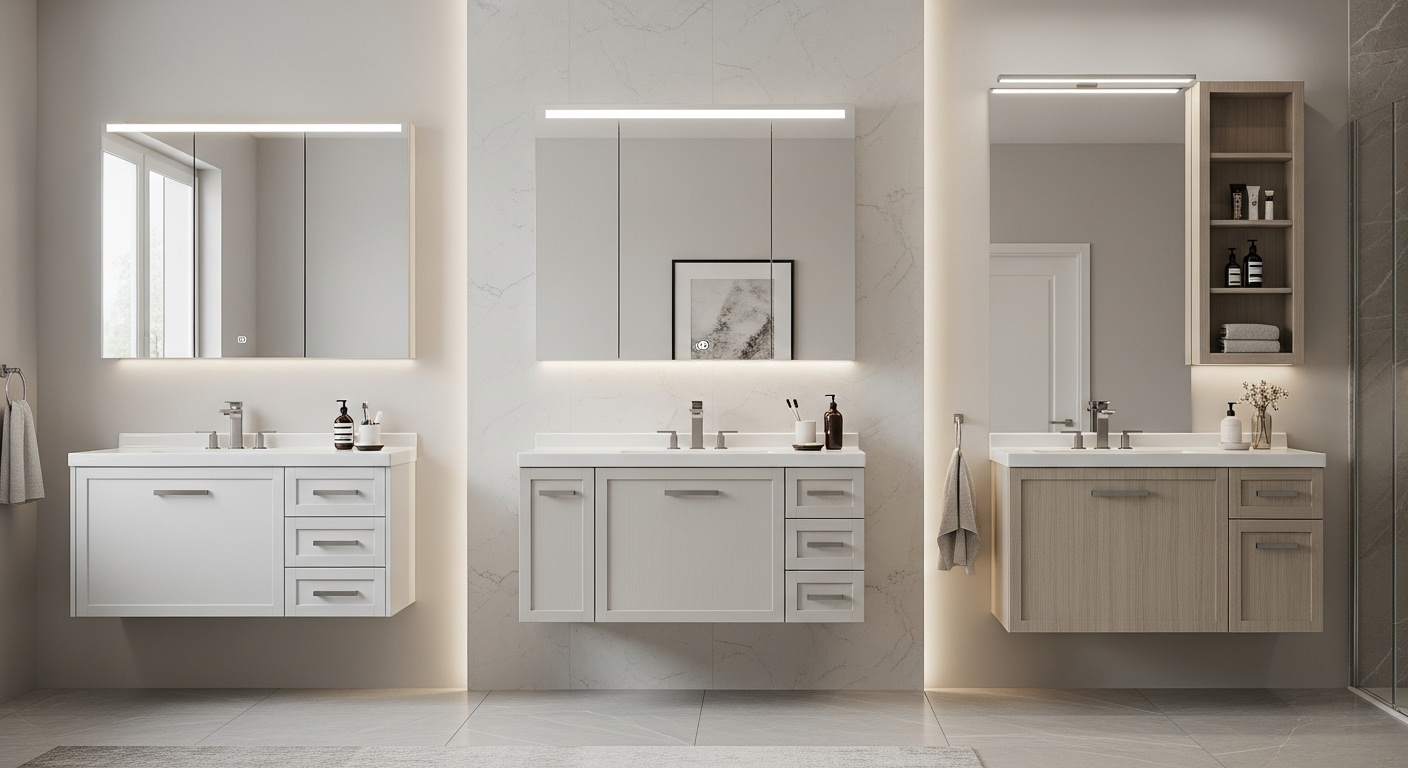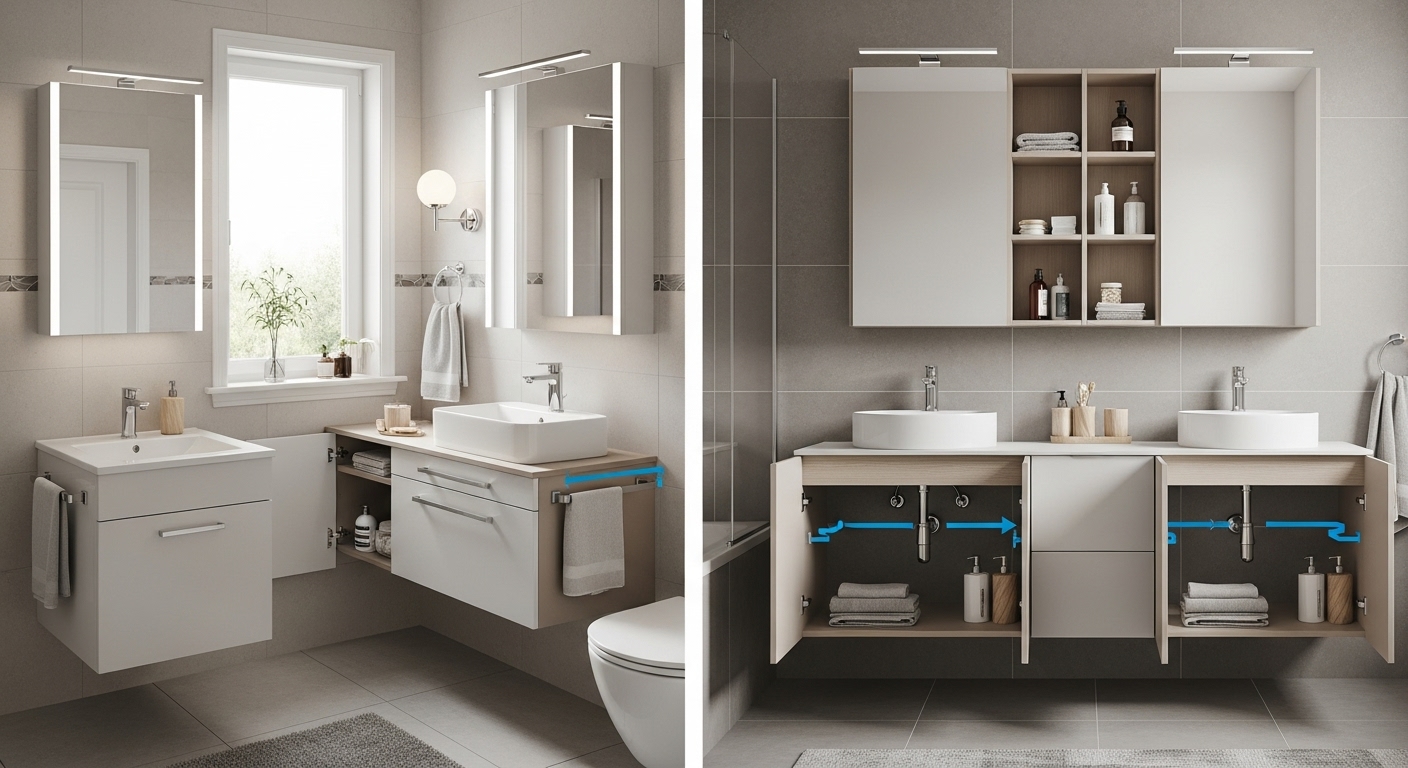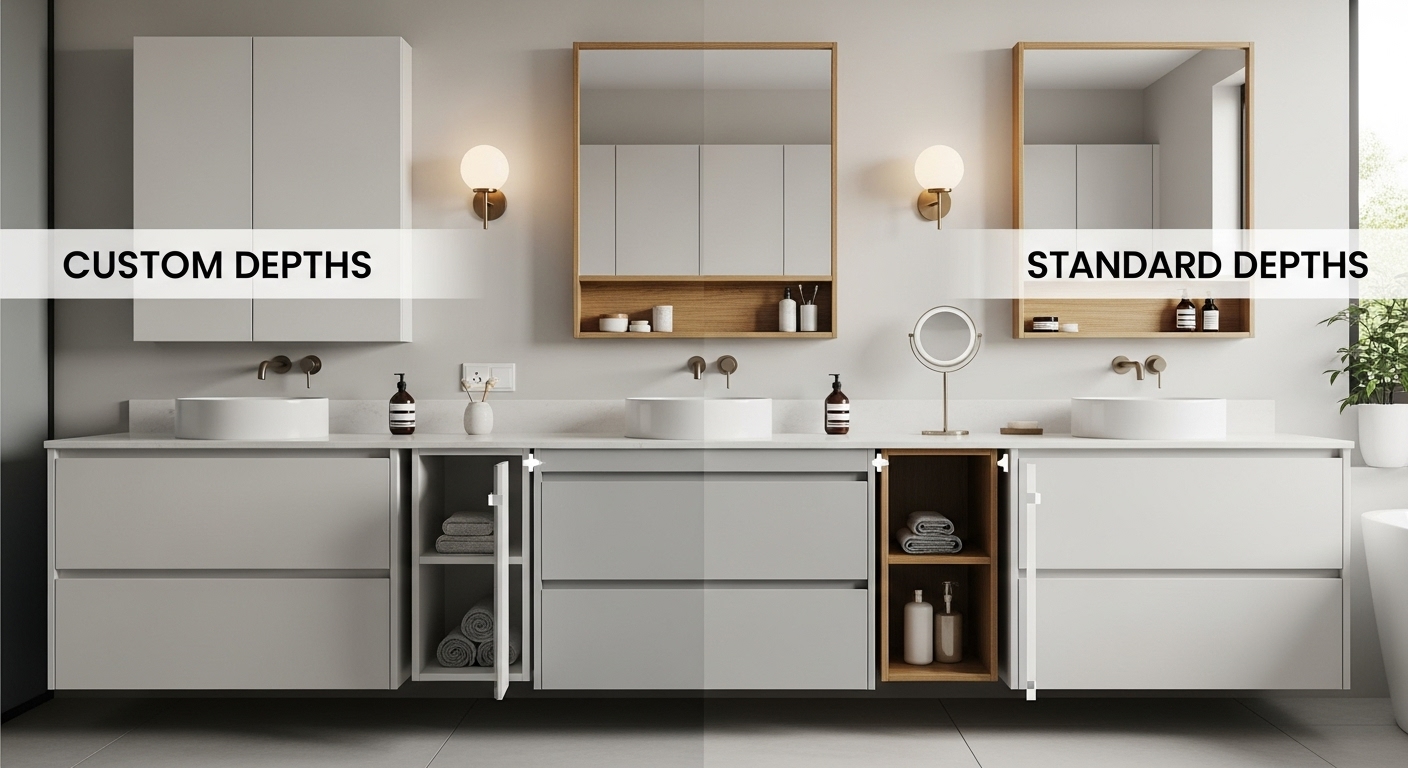
Bathroom cabinet depth plays a key role in both functionality and style. Cabinets that are too shallow may not provide enough storage for toiletries, towels, and cleaning supplies, while overly deep cabinets can crowd the room and make it harder to move around. Choosing the right depth helps keep the bathroom organized, efficient, and comfortable to use.
We will cover standard cabinet depths, the differences between vanity, wall, and tall cabinets, and important factors to consider when selecting the perfect depth for your bathroom. By the end, you will have a clear understanding of how to balance storage needs with available space.
Standard Bathroom Cabinet Depths: Finding the Right Fit
Bathroom cabinets come in a variety of depths, each designed to meet specific storage and space needs. Knowing the standard measurements helps in planning a functional and comfortable bathroom layout.
1- Vanity Cabinets
Vanity cabinets, the most common type, typically have a depth of 24 inches. This size allows enough space for sinks, plumbing, and daily essentials. Wall-mounted or floating vanities can sometimes be slightly shallower, around 18 to 20 inches, which works well in smaller bathrooms or to create more open floor space.
2- Wall Cabinets and Medicine Cabinets
Wall-mounted cabinets and medicine cabinets usually range from 4 to 12 inches deep. Shallower options keep the room from feeling crowded while still offering storage for toiletries, medicines, and small items. Deeper cabinets provide more space but require careful placement to avoid obstructing mirrors or lighting.
3- Tall or Linen Cabinets
Tall cabinets, also known as linen cabinets, often have a depth between 12 and 18 inches. These cabinets are designed to store towels, linens, and larger items. They are generally shallower than vanities to prevent the bathroom from feeling cramped, especially in narrow spaces.
4- Open Shelving and Floating Cabinets
Open shelves and floating cabinets usually have shallower depths, around 6 to 12 inches. This keeps them visually light while providing space for display items or frequently used toiletries. Their reduced depth helps maintain an airy, uncluttered bathroom design.
Factors That Influence Bathroom Cabinet Depth
Choosing the right cabinet depth depends on several practical and design considerations. Each factor can affect how comfortable and functional the bathroom feels.

1- Bathroom Size
The size of the bathroom plays a major role in selecting cabinet depth. In smaller bathrooms, shallower cabinets help keep the space open and easy to move around. Larger bathrooms can accommodate deeper cabinets, which allow for more storage without making the room feel crowded.
2- Storage Needs
Think about what will go inside the cabinets. Deeper cabinets can hold large items like towels, cleaning supplies, or bulk toiletries, while shallow cabinets are better suited for smaller items such as daily-use products or cosmetics.
3- Sink Type
The type of sink affects recommended cabinet depth. Undermount sinks often fit well with standard depths, vessel sinks may require a shallower vanity to maintain comfortable counter height, and integrated sinks can influence both depth and cabinet design.
4- Plumbing Considerations
Plumbing placement is an important factor. Cabinets need enough space to accommodate pipes, drains, and water supply lines. This may limit how deep a vanity can be, especially in older bathrooms with non-standard plumbing layouts.
Custom vs. Standard Bathroom Cabinet Depths
Bathroom cabinets come in standard sizes, but custom options are available for those who want a more precise fit. Understanding the advantages of each type helps make the right choice. Standard cabinets are widely available, affordable, and fit most bathrooms without major adjustments. They provide a simple solution for typical layouts and are easy to replace or upgrade.
Custom cabinets offer storage that matches your exact needs. They are perfect for small, narrow, or awkward spaces and can accommodate unique sinks or plumbing setups.
Custom cabinets usually cost more and may take longer to install. Future changes to plumbing or layout can be limited, so it’s important to balance personalized storage with budget and practicality.
Recommended Depths for Different Bathroom Cabinets
Not all bathroom cabinets are created with the same depth. Each type has its own standard range that balances storage with space efficiency. Here’s a quick look at what works best.
- Vanity Cabinets: Usually between 18 and 24 inches deep. Wall-mounted vanities tend to be shallower, while freestanding models provide extra storage space.
- Wall Cabinets: Typically range from 4 to 12 inches deep, keeping them slim and practical for toiletries without taking up too much room.
- Linen or Tall Cabinets: Often 12 to 18 inches deep, giving enough space for towels, linens, and larger items without overwhelming the bathroom layout.
- Floating Shelves: Commonly 6 to 12 inches deep, offering light storage for essentials or decorative accents while maintaining an open feel.
- Medicine Cabinets: Usually 3 to 6 inches deep, keeping them compact, easy to reach, and functional without intruding into the bathroom space.
Wrapping Up:
The depth of bathroom cabinets makes a big difference in both storage and comfort. Standard options like 24-inch vanities, slim wall cabinets, and compact medicine cabinets work well in most bathrooms, while custom depths can maximize unusual spaces. Shallow designs help small bathrooms feel open, while deeper cabinets provide extra storage in larger rooms. Considering factors like sink type, plumbing, and overall design helps create a balanced, functional space. By matching cabinet depth with storage needs and bathroom size, it’s possible to achieve both style and practicality in one well-planned design.

